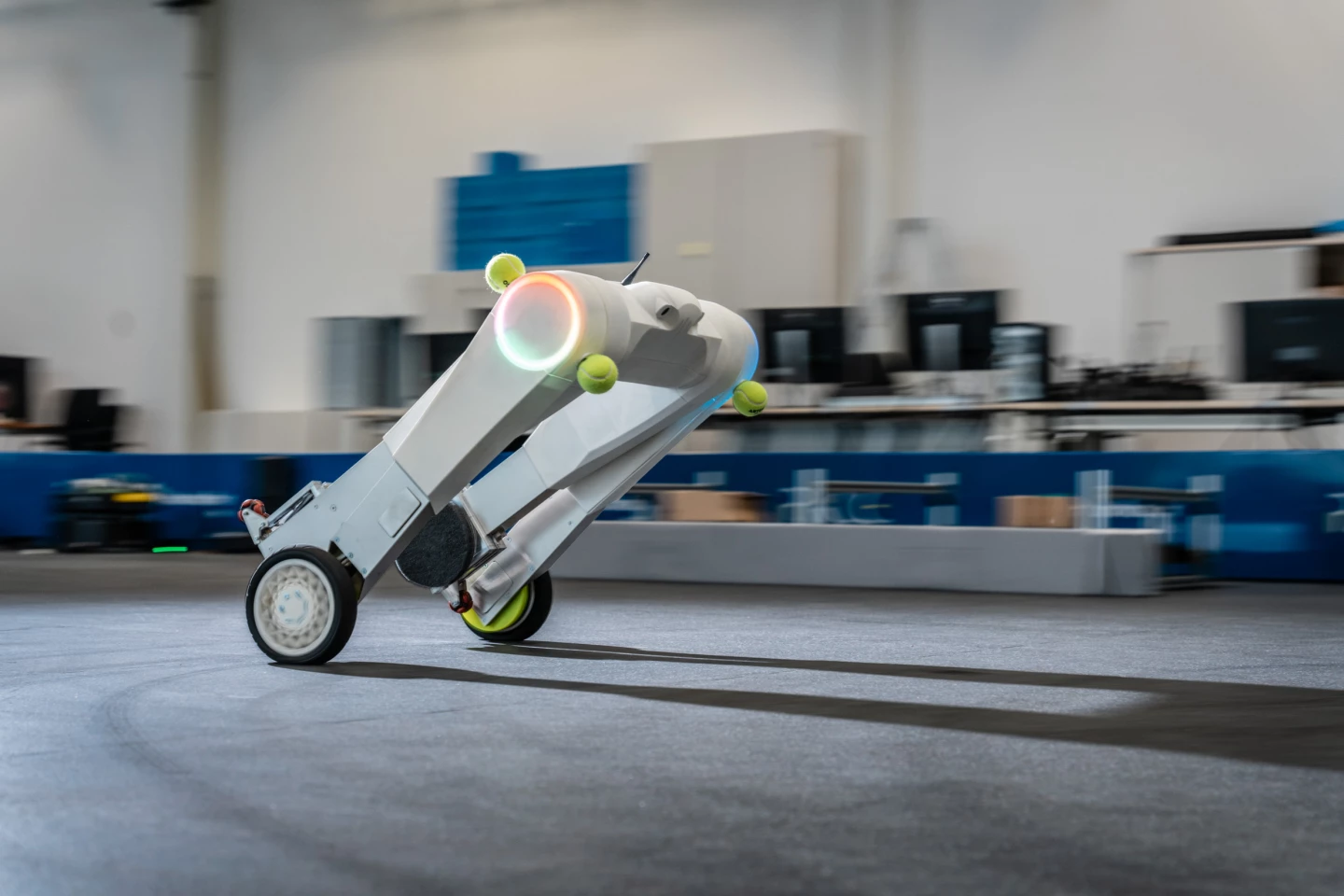Early humanoid robots probably won't be able to do much that Fraunhofer's self-balancing evoBOT can't do much faster, and its new autonomous, omnidirectional O³dyn pallet jack looks like another slam dunk for logistics and warehousing.
Humanoids are well and truly the Next Big Thing, and they've been stealing all the headlines lately, but as Figure founder and CEO Brett Adcock told us a couple of months ago, they're unlikely to be found doing much more than picking things up, carrying them around, and putting them down again when they first start rolling out and doing useful work.
And in order to build something that'll eventually learn to use all manner of tools and take over all manner of human labor jobs across all sorts of working environments, humanoid designers are stuck with the human body shape – which is far from the ideal form for these early use cases in flat-floored warehouses and factories.
Hence, Boston Dynamics has gone commercial first with its quadrupedal Spot and self-balancing Stretch robots, and Germany's Fraunhofer Institute is getting stuck into similar territory with its own pair of logistics robots, developed.
Where a humanoid might eventually walk at 5-6 km/h (3-4 mph), much like we do, and carry somewhere around 20 kg (44 lb) of payload, the self-balancing two-wheeled evoBOT can already do up to 60 km/h (37 mph) on its extendable legs, lifting up to 65 kg (143 lb) in its self-locking lifting arms – that's more than three times the lifting work, at up to 10 times the speed.
It can carry as much as 100 kg (220 lb) if somebody else loads it up, and it's capable of placing things down with impressive precision, as demonstrated by stacking crates. While its rotating, circular grippers are far less dexterous than hands, they allow evoBOT to lift things straight up in the air and over backwards without turning them upside down, allowing even a waist-high robot access to chest-high shelves.

It's relatively compact, lightweight at around 40 kg (88 lb), and efficient, running for up to 8 hours on a battery charge. If there's enough grip, Fraunhofer says it can "comfortably" handle slopes up to a ridiculous 45 degrees, even on uneven ground, and it zips around with surprising agility and speed, like the love child of the TARS robot from Interstellar and a common Segway. If it falls over for some reason, it can quickly and easily get back up.
It's just completed a test at Munich Airport, as shown in the video below, where there's plenty of space for a fella like this to stretch its legs and make use of its speed and muscle. And quite apart from its obvious utility, it's very cute to watch – even if the latest Disney robots are definitely and deliberately a ton cuter.
Considerably less cute, but at least as functional, is the unpronounceable O³dyn robot, a powerful autonomous pallet jack running on omni-directional Mecanum wheels and air suspension, and capable of operating indoors or outdoors.
This machine gets around at up to 36 km/h (22 mph), using LiDAR, GPS and 3D camera systems to navigate and perceive its environment. It uses its omnidirectional wheels to precisely position itself around a pallet, lowering itself on its suspension for pickup, then folds out some chunky arms to lift it from both sides, using the same holes a forklift driver would aim for.

From there, it can carry things around with impressive agility and get in and out of tight spaces, thanks to the fact that it can move in any direction while facing any direction. Currently in prototype form with an aluminum frame, it's already rated for 350 kg (772 lb) loads, but once it gets through to production, it can easily be beefed up to tackle as much as 1,300 kg (2,866 lb) without needing to upgrade the motors or drive system.
Fraunhofer admits the O³dyn system still needs work when it comes to dealing with "the sudden appearance of obstacles in the vehicle's path," but it's equipped the robot with an emergency brake system that essentially dumps the air from the suspension system and drops the robot onto some friction brake plates under the frame, pulling it to a standstill "immediately," and presumably throwing any unsecured box on the top of the stack forward at roughly its prior cruising speed.
Check out its mesmerizing omnidirectional motion in the video below:
Very neat stuff, and yet another interesting glimpse at the factories and warehouses of tomorrow.
Source: Fraunhofer Institute for Material Flow and Logistics








